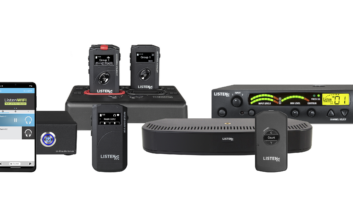The utilisation of Dynamic Spectrum Management Systems (DSMS) will bolster the wireless connectivity available to critical industries while protecting incumbent users in shared spectrum bands, according to a new whitepaper developed in collaboration between the Dynamic Spectrum Alliance (DSA) and the Wireless Future Project.
As demand for wireless connectivity continues to surge, the use of databases and automated spectrum management systems to coordinate efficient spectrum sharing has emerged as a critical regulatory tool. A significant number of countries have now authorised DSMS to manage frequency access in shared bands and protect incumbent operations – including military and public safety systems – from harmful interference. The ‘Solving the Spectrum Crunch’ whitepaper, authored by Wireless Future Program Director Michael Calabrese as part of the Digital Access Programme (DAP) funded by the Foreign, Commonwealth and Development Office of the UK (FCDO), highlights the major benefits and capabilities afforded through DSMS technology to regulators, while considering future advancements in this field.

“While spectrum database coordination is not a new concept, the evolution from a manual to dynamic approach has proven essential when looking to use spectrum more efficiently”, said DSA president Martha Suarez. “DSMS enable lower transaction costs, speed up time to market, and protect incumbents from interference. The findings of Michael’s whitepaper should prove insightful to regulators across the globe, encouraging them to embrace modern spectrum management tools to meet the growing demand for broadband access”.
The results of the whitepaper indicate DSMS technology is capable of expanding the supply of wireless connectivity critical for a number of industries and economic activity across different frequency bands. For example, in the 6 GHz band, Automated Frequency Coordination (AFC) systems enable the use of standard power devices, for crucial applications such as Wi-Fi coverage in outdoor hotspots, or in stadiums and other sporting venues.
DSMS technology can also be leveraged to provide additional capabilities, including the monitoring and collection of data on actual uses of a band, coexistence optimisation to minimise mutual interference, and enforcement assistance – including the ability to identify and shut down errant devices. Secondary market transactions can be better facilitated, while providing a portal for incumbents and users to report corrections or updates to licensing data and operating parameters.
“The technical evolution from manual to dynamic frequency coordination yields substantial and demonstrable benefits for regulators, industry stakeholders and end-users,” said Wireless Future Program director Michael Calabrese. “Spectrum capacity is increasingly sought-after, but additional bands, including 6 GHz, are emerging as candidates for shared use via AFC. Our whitepaper examines these in depth, with a focus on the emerging technologies promising to make DSMS even more efficient and cost-effective in the future”.
 The whitepaper also highlights several emerging technological advances that will amplify the benefits of DSMS. These include more detailed geographical data (eg, terrain, clutter, building heights and materials), real-time spectrum occupancy data, the growing sophistication of propagation and interference modelling alongside value-added, cloud-based database services. The incorporation of advanced Artificial Intelligence (AI) and blockchain technology is also considered.
The whitepaper also highlights several emerging technological advances that will amplify the benefits of DSMS. These include more detailed geographical data (eg, terrain, clutter, building heights and materials), real-time spectrum occupancy data, the growing sophistication of propagation and interference modelling alongside value-added, cloud-based database services. The incorporation of advanced Artificial Intelligence (AI) and blockchain technology is also considered.
The findings follow the US’s Federal Communications Commission (FCC)’s recent decision to initiate the certification process for AFC systems operating within the 6 GHz band. This will support the adoption of next-generation Wi-Fi technologies which are vital for both enterprise and consumer broadband connectivity. Additionally, Canada has become the first country to approve an AFC operator for commercial operations. As a result, commercially operating standard-power 6 GHz Wi-Fi services will soon be readily available in the coming months, with similar advancements expected in Brazil, the Republic of Korea, the Kingdom of Saudi Arabia and other countries.
The ‘Solving the Spectrum Crunch’ whitepaper is now available on the DSA website.







